Morocco holidays whisk us into a rainbow of raucous colours and enlightening Islamic culture. Marrakech is called the Red or Rose City, with its ancient red and ochre walls contrasting with the dramatic backdrop of the white snowcapped Atlas Mountains. Essaouira, the Blue City, is not only on the sea, but is a sea of blue.
“IT’S AFRICA, IT’S ARABIC, IT’S AN AWAKENING TO THE JOYS OF ISLAMIC CULTURE. IT FELT LIKE I HAD LANDED ON A MAGIC CARPET.”
Women dressed in blue work alongside blue painted boats and you can watch the world go by through blue shuttered windows. Chefchaouen is painted so many delicate shades of indigo, it glitters like a sapphire peeking through the rocks of the Rif mountains all around. And Casablanca is the white city where, with its Spanish heritage, every ‘casa’ is ‘blanca’. And, of course, every town has a medina or souk where the array of colours, from spices to slippers, cushions to costume jewellery, shakes off any pre-holiday blues… whatever the time of year. Read more in our Morocco travel guide.
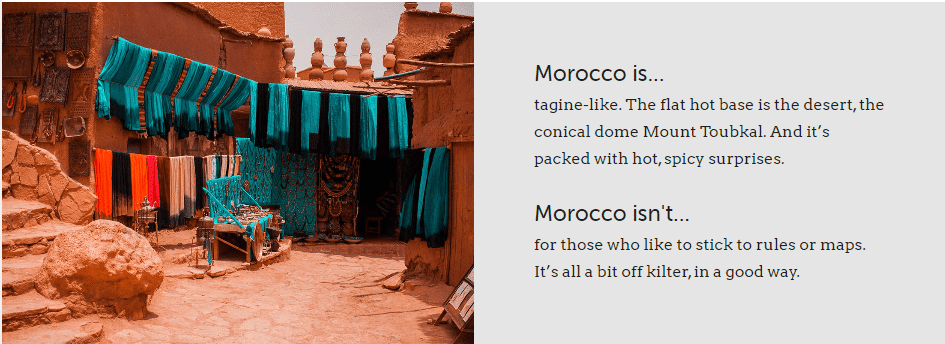
WHAT WE RATE & WHAT WE DON’T
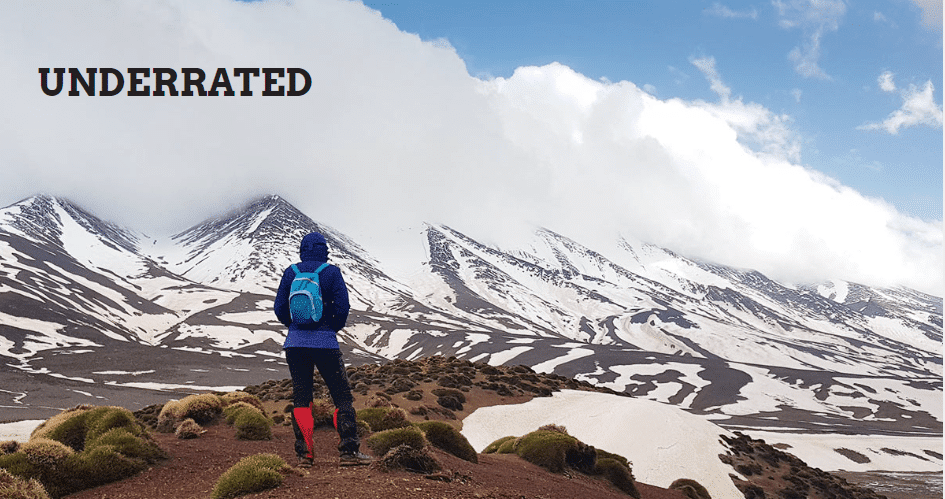
Family holidays
It’s hot, there are riads with gorgeous pools, kasbahs that are like something out of a fairy tale, snowmelt rivers to raft down, an ocean to surf in, and dunes to climb and clamber over on camels. Best of all, our specialists know when to swap a long walk for a mule ride or a hotel for a family-run mountain gite.
Atlas Mountains
The Atlas Mountains have been on the expert explorers’ radar for a long time, but lovers of Moroccan souks and seaside are now starting to embark on journeys up to these magnificent peaks. Hardcore hikers head for the High Atlas’ Mount Toubkal, but there is superb walking to be had in the lower Atlas range too, with welcoming Berber people at remote mountain villages along the way.
Cycling
With dirt roads, mountains and plenty of heat, Morocco has breath-taking biking. You can go mountain biking from the Atlas Mountains to the desert, with the omnipresent snowcapped mountains an exhilarating backdrop as you take on the ups and downs of Atlas ascents and desert descents. With an ever expanding network of quiet tarmac roads, road cycling is growing in the Morocco too.
Fez
If Marrakech is the lion, Fez is the tiger. The one that doesn’t need to roar about how beautiful it is, and long admired for its innate elegance. It has a superbly preserved ancient Islamic heritage, with Attarine Madrassa, Moulay Idriss mausoleum and Karaouine Mosque as highlights. Its heart is the labyrinthine, car-free Fez el-Bali medina. The Fez Festival of Sacred Music in June is a fab event too.
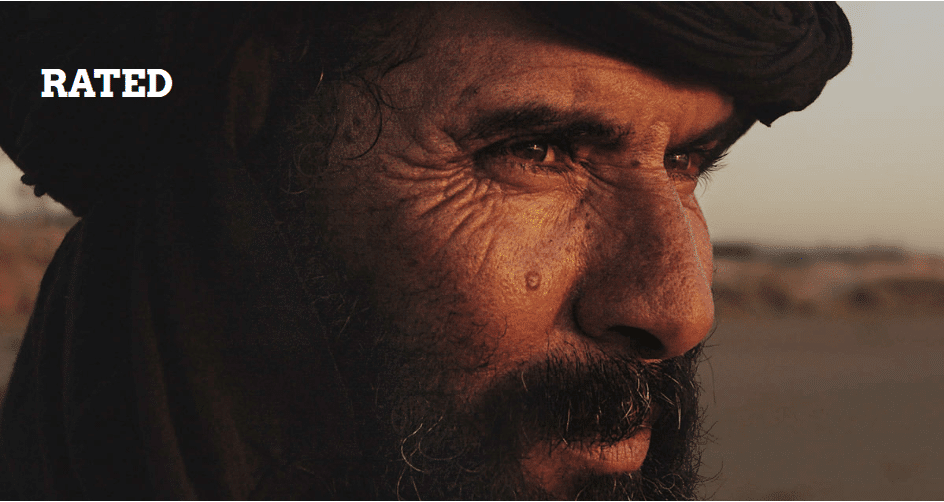
Meeting the Berbers
The indigenous people of Morocco, and traditionally nomadic, most Berbers are now in settled communities around the lower and High Atlas Mountains, and Rif Mountains. Stay with a Berber family in the Sahara, trek with them into the High Atlas as they bring their livestock up to summer pastures, or take a traditional guided trek into the mountains with donkeys or camels.
Chefchaouen
This beautiful blue painted town appears in the slopes of the Rif Mountains like a sapphire glinting through a rock face. Perhaps inspired by its aesthetic, it has also become a centre for quality artists and artisan crafts people. And with the mountains and Talassemtane National Park as a backdrop, the artist’s palette is replete.
Using a guide
Not only does it make negotiating your way around the souks, Sahara, mountains or medinas much easier, but it’s also a vital source of income in a country that is very dependent on tourism. Moroccans have a great sense of humour, are beyond welcoming and very proud of their country. Responsible tour operators always engage a local guide to accompany you – meaning your trip will be made all the more memorable and fun.
Mount Toubkal
The highest peak in North Africa at 4,167m, Mount Toubkal is for hikers who have trained for the climb, the challenges increasing with each contour change. Most treks start in the village of Imlil in the heart of Toubkal National Park, where the smell of juniper, cedar and Aleppo pine abound. Then you hit the colder arid steppe, where nature turns a little more hostile to hikers. A serious trek, so only do it with an expert mountain guide. But do it.
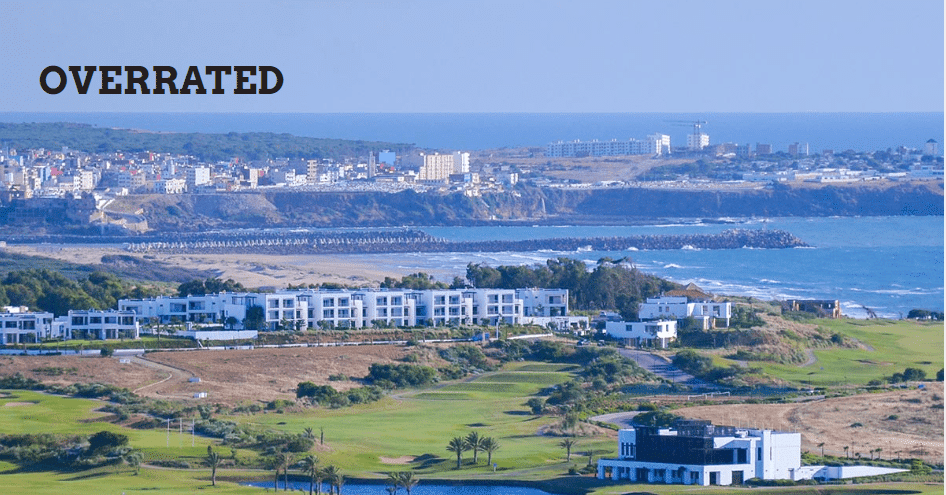
Agadir
In 1960, Agadir was hit by an earthquake which destroyed everything including the ancient Kasbah. And now tourism seems intent on destroying the new city. With all-inclusive resorts, bars and casinos standing alongside mosques, a seedy nightlife scene in some parts, and tacky tourist tat, it is an all-round beacon of irresponsible tourism.
Chez Ali
Coachloads of tourists are shipped out of Marrakech to experience the dinner spectacular at Chez Ali and eat mountainous tajines and couscous at large round tables in a huge Caidal tent. With displays of regional costumes, dance and fantasia horsemanship. Get a good local guide and seek out the real spectacles instead. Morocco is falling down with moussems, or festivals, that honour marabouts, or local saints.
Golf courses
There are over 20 golf courses in Morocco, with development of new ones – along with the accompanying water usage and infrastructure – happening as quickly as you can say, “Fore!” And with only five courses GEO certified, the international standard for eco courses, golf really is becoming the bogeyman of Moroccan tourism.
Develop or die
It has been like the Arab Spring of tourism in Morocco – a revolution of revellers as hordes of holidaymakers are dropped in by budget airlines. With the 5.5 million visitors in 2005 more than doubling to 13 million in 2019, the development of multinational golf, hotel and ski resorts has gone ballistic. Little of the money stays with local people, who have to put up with congestion, water shortages and social unrest.
FOOD, SHOPPING & PEOPLE
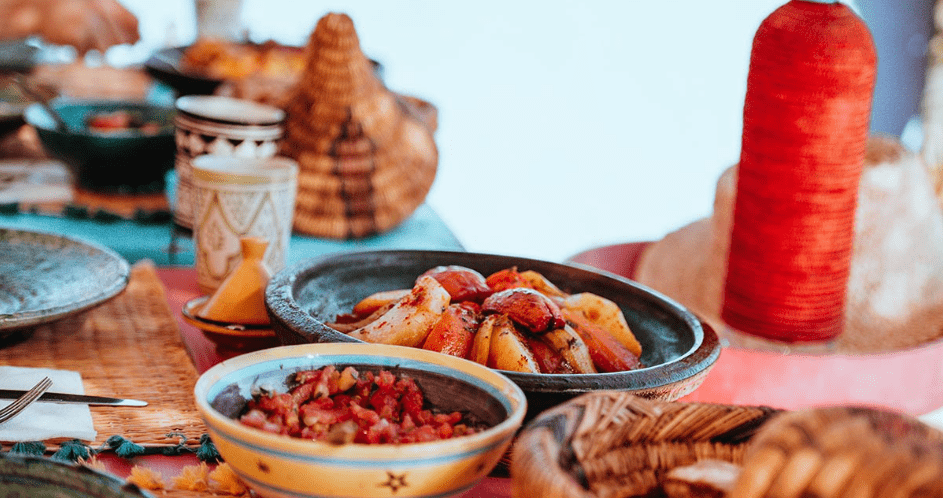
Eating & drinking in Morocco
Tagines are traditional Berber fare, with chicken or lamb, couscous and vegetables all slowly cooked together in an earthenware pot.
A pastille is a traditional meat pie, usually made of pigeon, although chicken is also used. For pigeon, you often need to order it in advance. Essaouira is the place for fish and seafood, straight off the blue boats.
There are juice sellers everywhere. The fresh orange juice is delicious.The mint tea is everywhere too, ladled with sugar.
“THE NAME, BERBER, COMES FROM ROMAN TIMES AND THE LATIN FOR BARBARIAN. THE NAME THEY GIVE THEMSELVES, HOWEVER, IS AMAZIGH, MEANING ‘FREE PEOPLE’. UP YOURS, ROME.”
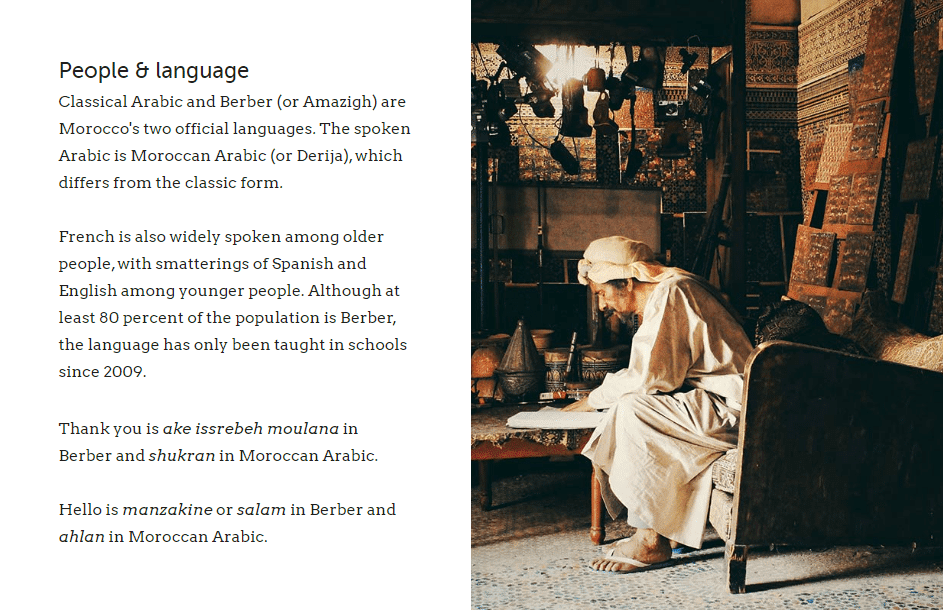
Gifts & shopping
Argan oil is everywhere now in Europe. Buy the real thing in souks everywhere.
Rose products make the sweetest gifts. Check out cooperatives along the Dades valley in particular.
It’s a shame for those with nut allergies as the almonds and walnuts are amazing. You can always find them a date, though.
Genuine handmade Berber carpets can be purchased and shipped direct from the artisans’ workshops. Go into small villages, such as in the province of Ouarzazate, to see them at work. Make sure to bring your measurements on holiday with you.
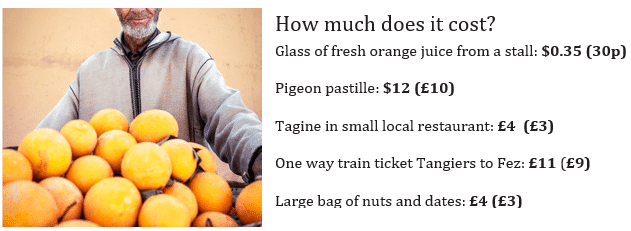
MOROCCO MAP & ITINERARIES
If you are trying to work out where to go in Morocco, think of it as a three tiered cake. The base is the Sahara Desert, with nomadic culture, oases and stunning dune landscapes dominating much of the landscape. The second layer is the sea, with two very different maritime systems of the Mediterranean and Atlantic wafting their salty influences over the north and west coasts respectively.
Standing tall on the top layer are the Atlas Mountains with Mount Toubkal, North Africa’s highest peak, dusted white for most of the year. Slice through the gateau of gorgeousness and you find the most delectable mélange of ingredients, with prolific Berber and Arab culture, imperial and colonial history, extraordinary trekking and cycling options, artisan crafts and gregarious people. And the icing on the cake? The superb food.
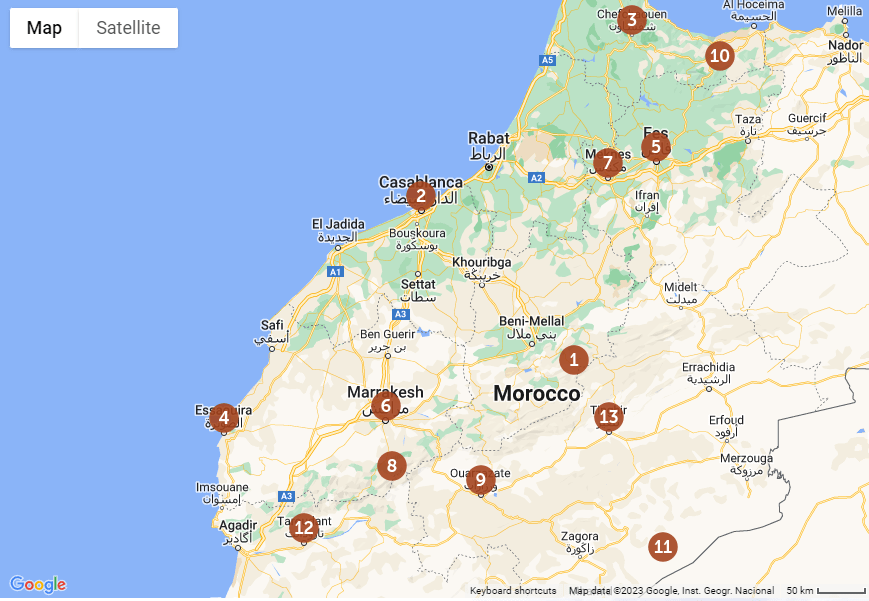
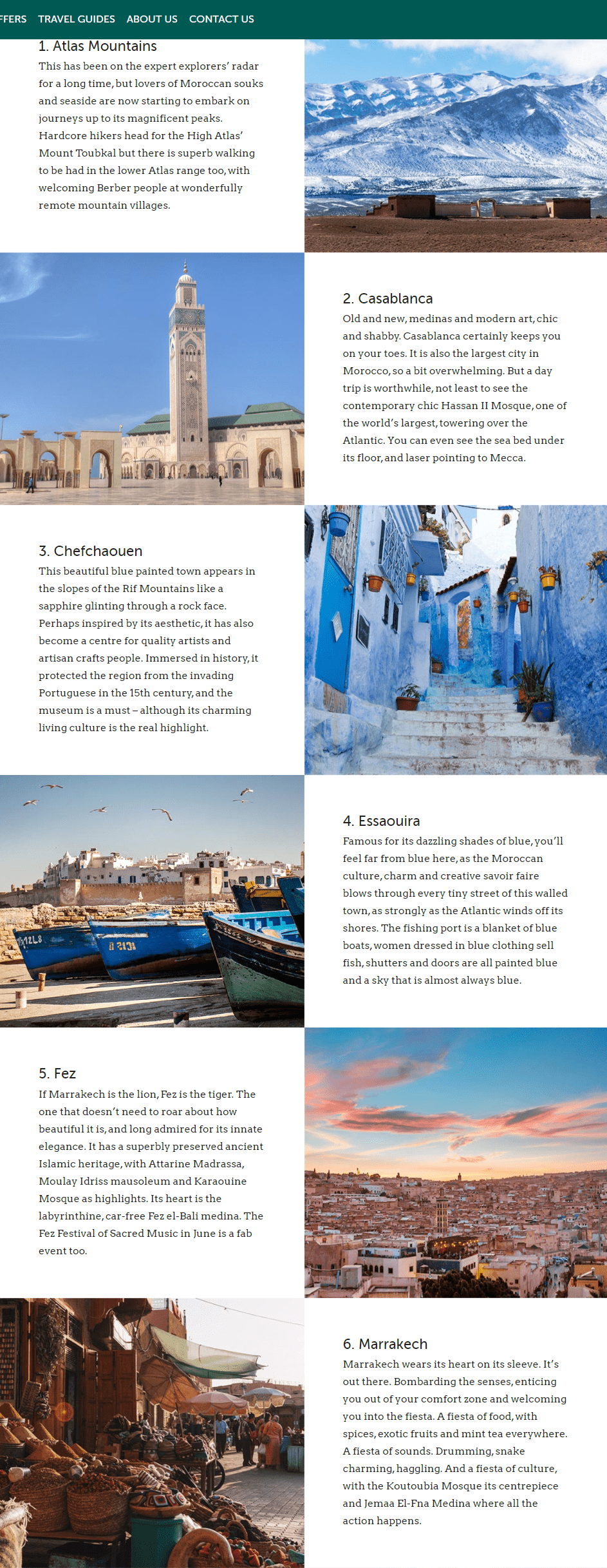
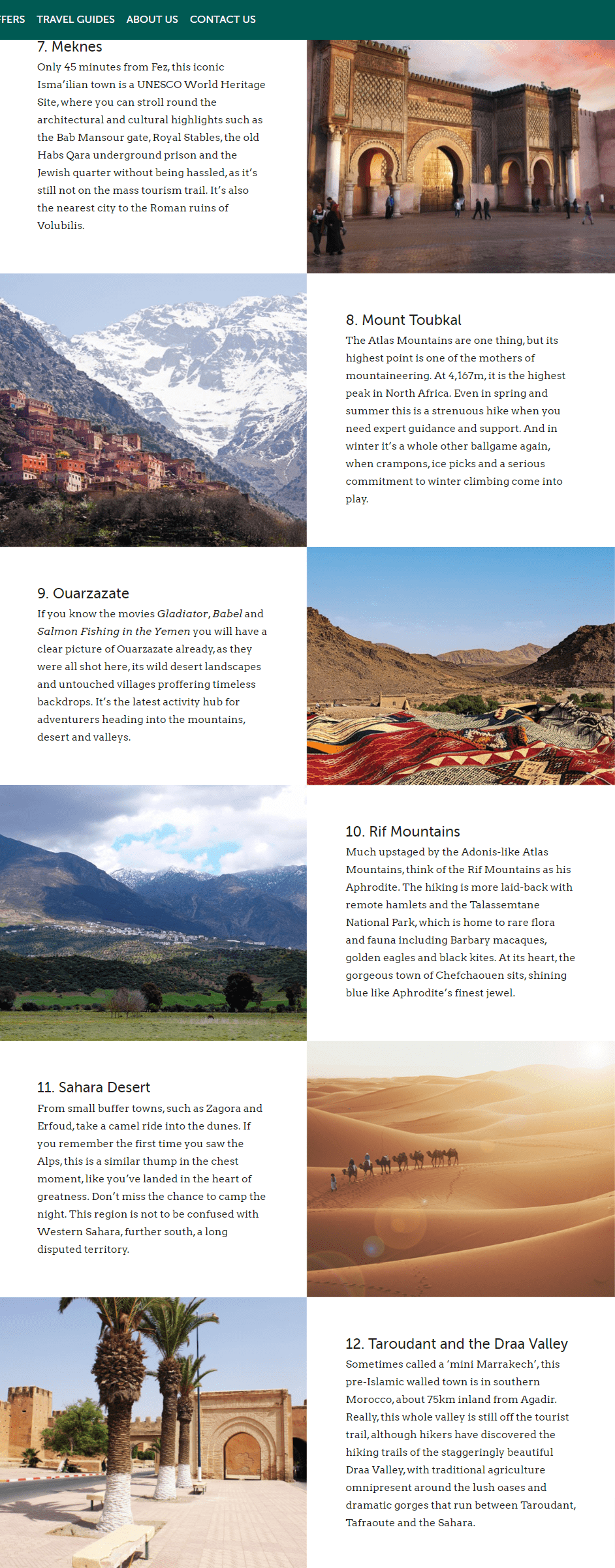
TRAVEL TIMES IN MOROCCO
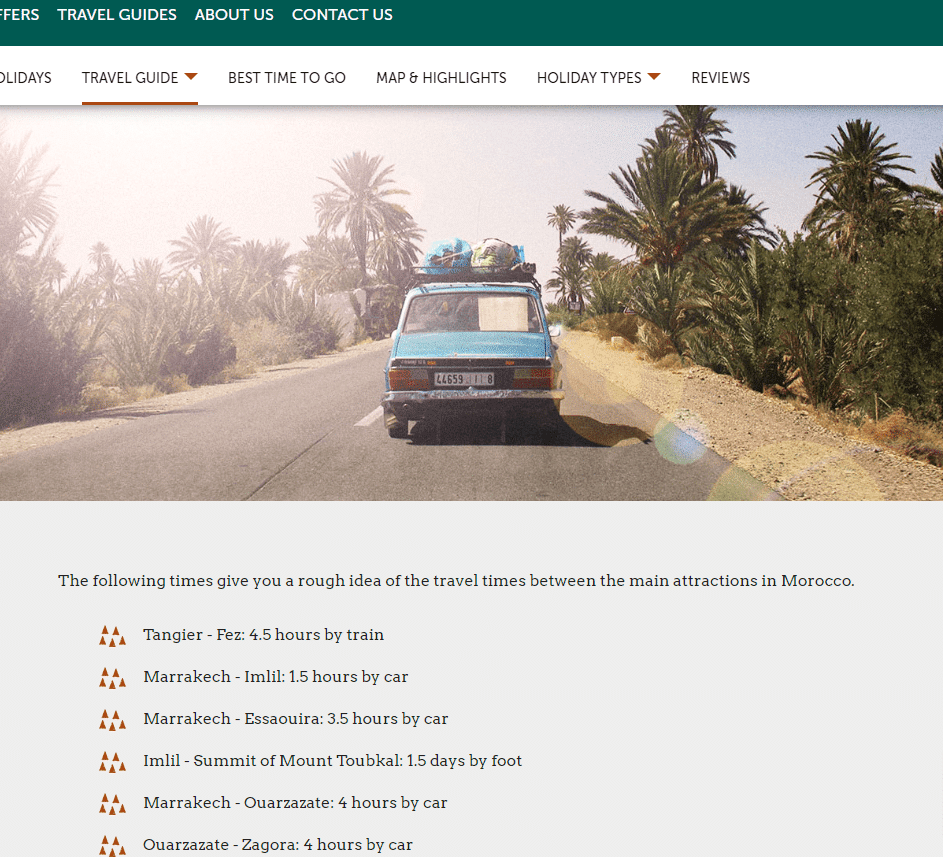
BEST TIME TO VISIT MOROCCO
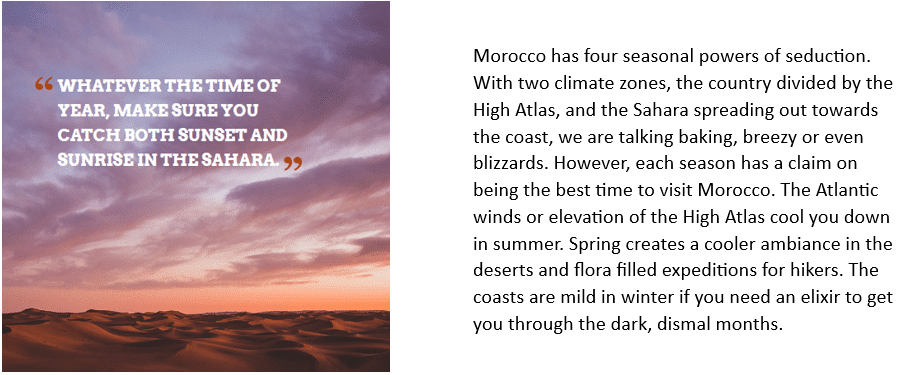
MOROCCO, MONTH BY MONTH
- If you want to ski, the season can be brief. The best time for pretty much guaranteed snow is mid-January to mid-February. Winter walking is a better option with a longer season. As there is no snow in the Anti-Atlas, you can enjoy mountain life during December, January and February, with sunny days but cold nights.
- Desert dust storms are at their most frequent between February and April.
- The most popular time for hiking throughout the Atlas ranges is between March and November.
- April and May are good desert choices. The desert is just too hot June-September, so if you want to explore it properly, best to visit outside these months. However, temperatures can drop by 20°C in the desert between night and day, so be wary of this and check temperatures in advance. And be prepared with a good sleeping bag if you are camping.
- If you can handle hiking in the heat, July and August are hot in the Anti-Atlas, but not off the scale desert madness like the rest of Morocco.
- Temperatures in the Sahara are simply baking in August so stay clear. However, they could be 15°C lower in Essaouira on the coast in July and August, for example.
- The Atlantic coast sees plenty of rain in the winter months, especially around Casablanca. The further south you go, the safer the bet at this time of year, as the desert climate creeps in.
- Some people resist travelling during Ramadan, as a few businesses shut down. But in the main tourist spots, most stay open, the evenings come alive as people come out to eat en famille, and witnessing this important religious event feels like an honour for many non-Muslim visitors.
A BRIEF HISTORY OF MOROCCO
To understand the history of Morocco, you need to understand the Maghreb. A Berber word, it is traditionally defined as the region that includes the Atlas Mountains and the coastal plains of Morocco, Algeria, Tunisia, Libya and, in more recent times, Mauritania and the disputed territory of Western Sahara . The people of this region called themselves Maghrebi. Maghreb translates as ‘The West’ with this region taking up most of the western coastal regions of North Africa. Regions that were united as one as recently as the mid-20th century, when individual nation states were created. One of which was Morocco.
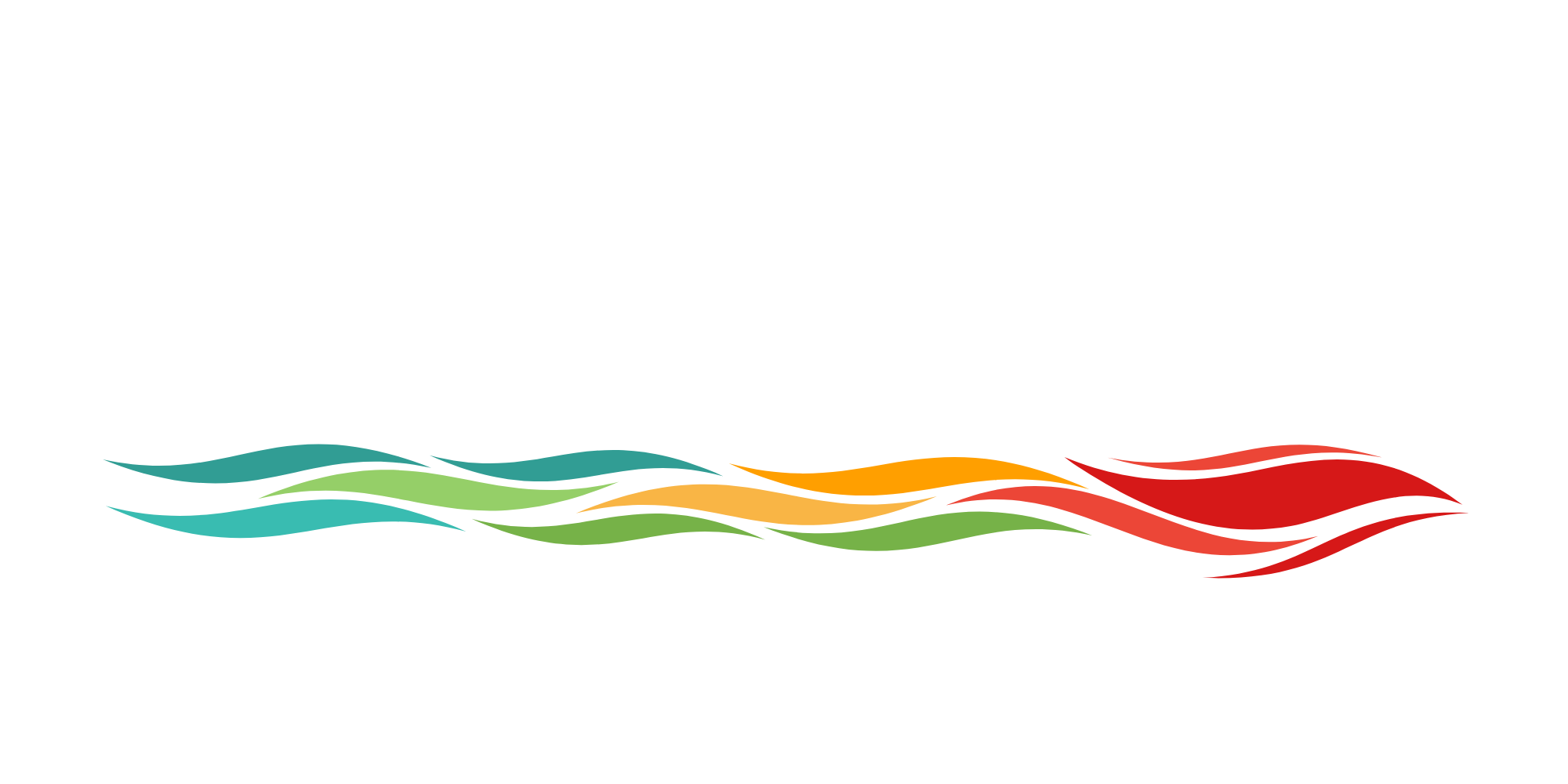
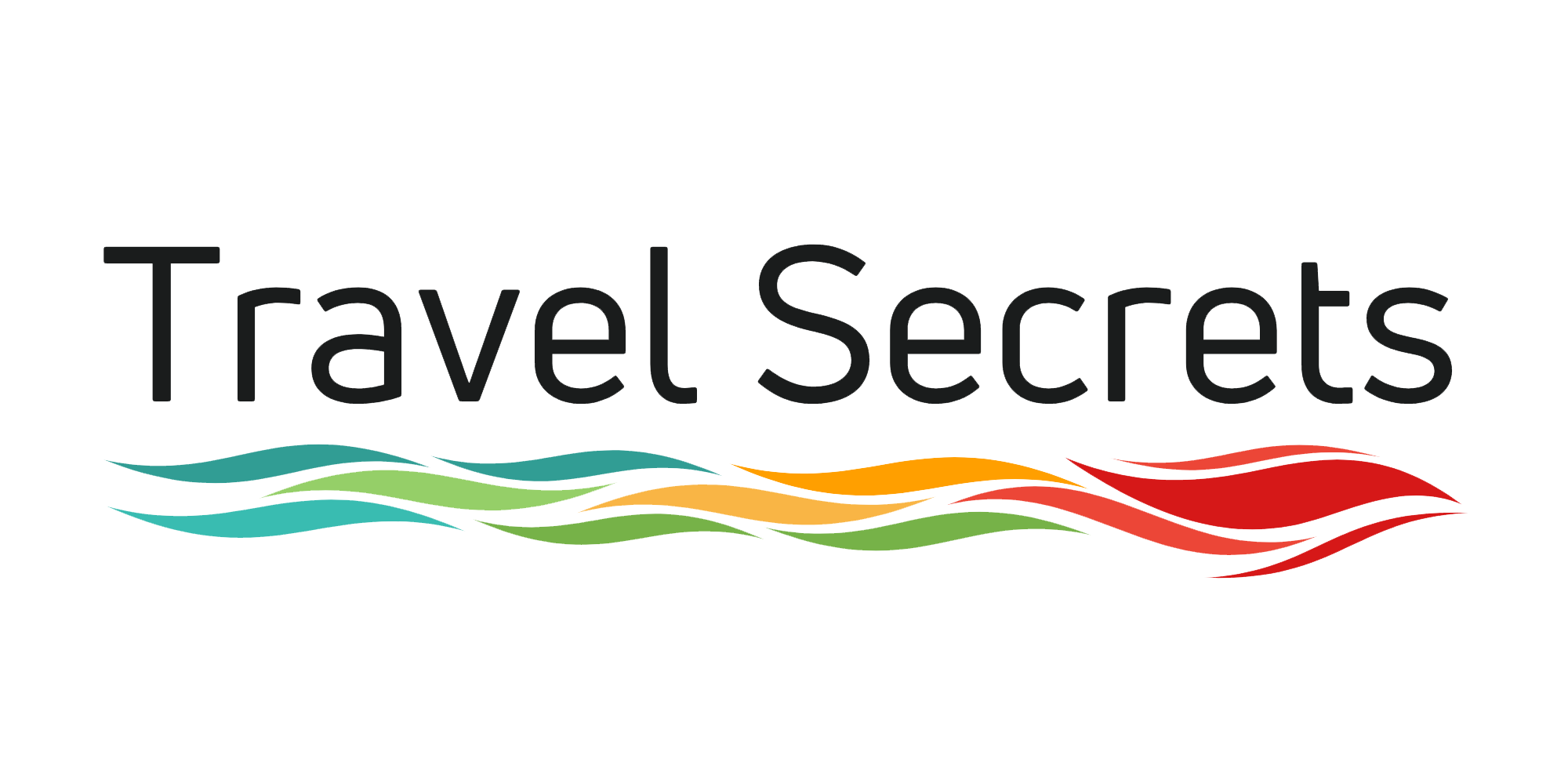
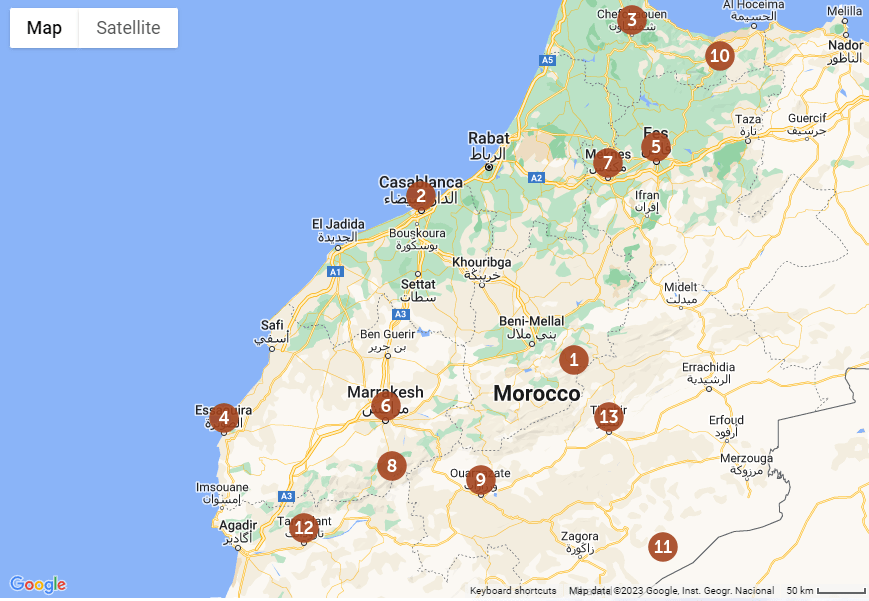
Comment (0)